Found in Texas and almost everywhere in Mexico, the Texas Indigo Snake is a large size snake that is a member of the colubrid family. They are non-venomous and have been declared as a threatened species by the US state of Texas.
| Kingdom |
Animalia |
| Phylum |
Chordata |
| Class |
Reptilia |
| Order |
Squamata |
| Suborder |
Serpentes |
| Family |
Colubridae |
| Genus |
Drymarchon |
| Species |
D. melanurus |
| Subspecies |
D. m. erebennus |
| Scientific Name |
Drymarchon melanurus erebennus |
| Length |
Often more than 6 ft (1.8 m), but specimens reaching up to 8 ft (2.4 m) are also not uncommon |
| Coloration |
The dorsal part is primarily pitch black in color with a highly glossy scaled skin, while the ventral part is somewhat salmon pink |
| Distribution |
From the southern parts of south Texas extending up to Veracruz in Mexico |
| Habitat |
Prefer living in burrows left by other animals in lightly vegetated areas close to a permanent water source; also found in mesquite savannah, coastal sand dunes and open grasslands |
| Diet |
Eats almost anything that then can overpower including birds, eggs, lizards, mammals, frogs, turtles, as well as other snake species including the venomous rattlesnakes |
| Venom Fact |
Nonvenomous |
| Breeding Season |
Winter months |
| Clutch Size |
10-12 eggs at a time |
| Mode of Reproduction |
Oviparous |
| IUCN Conservation Status |
Declared as a ‘threatened’ species by the state of Texas |
Texas Indigo Snake Pictures Gallery
-
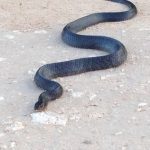
-
Blue Indigo Snake Texas
-
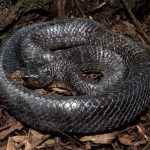
-
Drymarchon Melanurus Erebennus
-
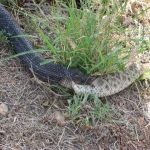
-
Texas Indigo Snake Eeating Rattlesnake
-
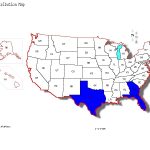
-
Texas Indigo Snake Range Map
-
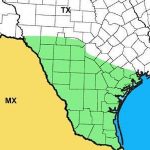
-
Texas Indigo Snake Range
-
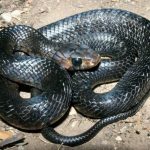
-
Texas Indigo Snake
-

-
Black Indigo Snake Texas
-
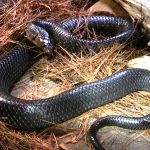
-
Texas Indigo Snake Pictures
-
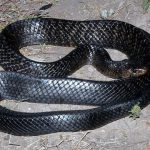
-
Indigo Snake Texas
-
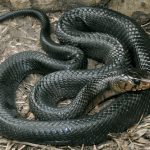
-
Texas Indigo Snake Images
-

-
Texas Indigo Snake Habitat
-

-
Texas Indigo snake














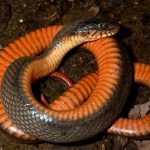
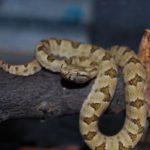


Hi, I would like to know if this snakes jaw is specially designed to be non-venomous ie does it have a stronger bite, to compensate for not having venom? I watched a film of a wild Texas Indigo hunting a rattlesnake and it appeared to deliver a decisive blow to the neck of the rattlesnake? What was very interesting was how the rattlesnake pattern running along the length of the rattlesnake seem to confuse the Texas Indigo.
Many thanks
warren